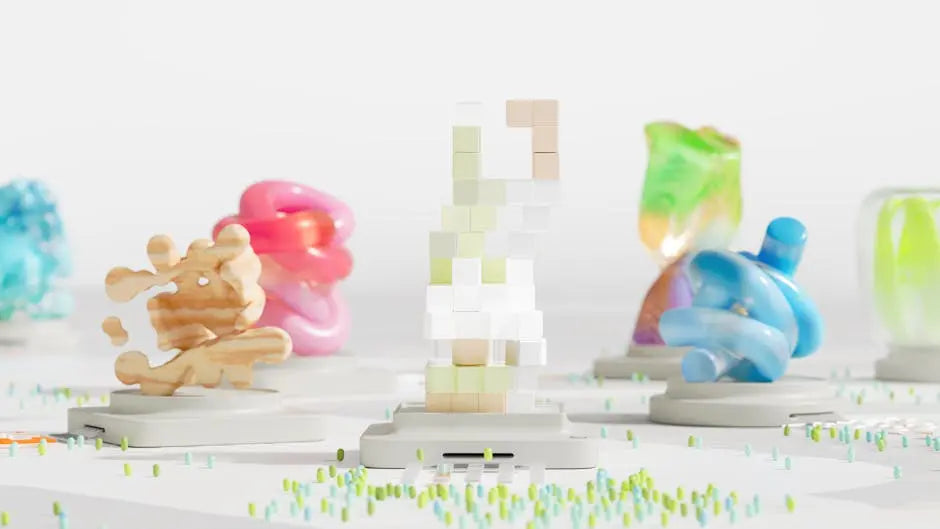My Cart
Your Cart is Currently Empty
FREE SHIPPING ON ALL ORDERS ABOVE $500


Abstract sculptures have a unique ability to communicate complex cultural stories and emotions. Through their shapes, materials, and placements, these artworks capture the essence of the times they were created in, offering insights into societal shifts and individual expressions. In this blog, we’ll explore how abstract sculptures can reflect cultural moments in inventive and meaningful ways.
Abstract sculptures often encapsulate the prevailing mood and attitudes of the era in which they are created. Artists draw inspiration from societal changes, political climates, and cultural trends to create pieces that resonate with the spirit of the times. These sculptures can act as historical barometers, reflecting the immediate cultural moment while influencing future reflections.
Consider how sculptures during the 1960s captured the tumultuous energy of the civil rights movement, employing bold forms and unconventional materials to express defiance and hope. The choice of materials and form can deeply influence how art represents society. In the modern context, artists continue to break traditional molds, encouraging audiences to see their world in a new light. Such works not only mirror current societal transitions but also offer a canvas to project future aspirations and transformations.
Through abstract forms, artists can express distinct cultural identities, using shapes and symbols that are meaningful to their community or heritage. These sculptures can highlight cultural diversity by showcasing unique artistic traditions and innovatively merging them with contemporary aesthetics.
The interplay between global influences and local art traditions is evident in the way sculptors incorporate cultural motifs. This synthesis not only celebrates diversity but also fosters a dialogue between different cultural paradigms. As viewers engage with these sculptures, they gain insights into the rich tapestry of cultural narratives, making these artworks profound educational tools. Sculptures can thus serve as bridges, connecting disparate cultures through shared human themes.
Abstract sculptures often evoke powerful emotions and provoke thought, capturing the complexities of human experiences. Artists use fluid lines, vibrant colors, and dynamic forms to convey feelings of joy, sorrow, hope, and despair, allowing viewers to connect with the piece on a personal and cultural level.
By engaging with these sculptures, spectators embark on a journey of introspection. While some pieces inspire a sense of peace, others might challenge viewers with their intensity, reflecting the tumult of human emotion. These emotional connections are not confined to the present, as abstract sculptures often evoke reflections on historical events. By communicating universal emotions, these artworks transcend cultural and temporal boundaries, creating an emotional resonance that can be felt across generations.
Artists use abstract sculptures to challenge and question social norms, providing a platform for commentary on societal issues. By disrupting traditional representations, these sculptures encourage audiences to reconsider perspectives and engage in meaningful discussions about cultural and social change.
In disrupting the norm, artists are not just rebelling; they are inviting discourse. By allowing for multiple interpretations, sculptures serve as catalysts for conversation about existing societal structures and injustices. This is particularly evident in pieces addressing gender equality, racial issues, and economic disparities. Art becomes a peaceful yet potent tool for activism, with the power to incite reflection and inspire change. As such, abstract sculptures have the potential to transform public opinion and influence societal progression.
Placed in public spaces, abstract sculptures interact with their surroundings, transforming environments and affecting how the community experiences the area. These installations become part of the cultural landscape, inviting public interaction and contributing to the social fabric of the locale.
Public sculptures serve as aesthetic landmarks and focal points for community activities, stimulating both social engagement and economic activity. By integrating with the environment, these sculptures often become symbolic identifiers for a place, representing community values and aspirations. They invite casual viewers to become part of a shared cultural dialogue, encouraging a collaborative reflection on communal identity. In doing so, public abstract sculptures offer more than visual beauty; they contribute meaningfully to the cultural dialogue within a community.
Artists often experiment with unconventional materials to create abstract sculptures, pushing the boundaries of traditional art forms. This innovative approach reflects contemporary culture’s embracing of new technologies and materials, symbolizing the adaptive and evolving nature of modern-day society.
The use of recycled and eco-friendly materials in sculptures has gained popularity, reflecting society’s growing environmental consciousness. By transforming everyday or discarded objects into art, sculptors challenge the perception of value and utility. These innovative works not only capture the creativity of the artist but also engage viewers in a broader conversation about sustainability and the role of art in promoting environmental responsibility. This evolution in material selection is a testament to art’s adaptability in addressing contemporary issues.
Abstract sculptures transcend time by allowing for enduring conversations across generations. They serve as catalysts for dialogue between the past, present, and future, enabling ongoing cultural exchange and understanding. Through these conversations, they preserve cultural narratives and legacy.
By engaging with abstract sculptures, individuals from different age groups can find common ground through shared interpretation. Art has the unique ability to unify, even when generations are divided by technology and contemporary lifestyles. Sculptures that remain relevant through time contribute to cultural literacy, enabling new generations to reflect on past narratives while shaping their future. This cross-generational dialogue fosters cultural continuity, ensuring that essential stories and lessons are not lost over time.